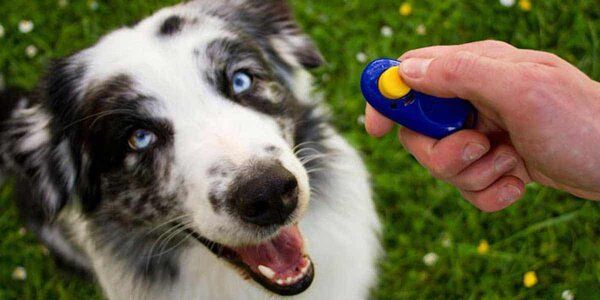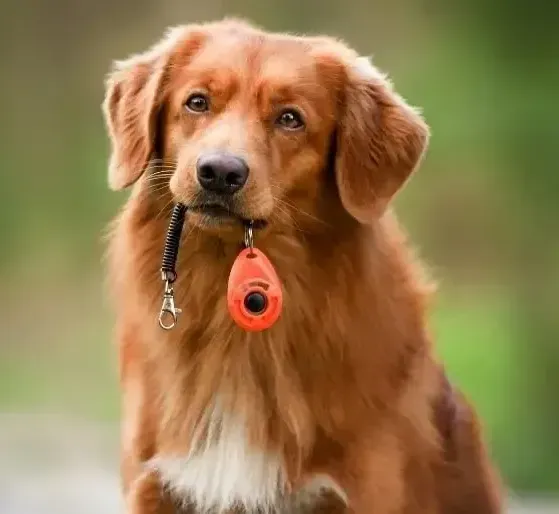When to Use A Clicker During Corpus Christi Dog Training
Clicker Dog Training to Teach New Behaviors
Clicker training is a powerful, science-based method that uses positive reinforcement to shape a dog's behavior. The clicker—a small handheld device that makes a distinct “click” sound—serves as a marker to let the dog know the exact moment they’ve done something right. This kind of training builds clear communication between dog and handler, speeds up learning, and boosts a dog’s confidence. But when is the best time to use a clicker during training?
Clicker training is most effective when teaching a dog a brand-new skill or behavior. Whether you're introducing basic commands like “sit,” “down,” or “stay,” or more advanced tricks such as “spin” or “touch,” the click helps pinpoint the exact moment the dog performs the correct action. This precise feedback makes it easier for dogs to understand what they’re being rewarded for.
Clickers are especially useful in shaping and capturing—two techniques that reward a dog for incremental steps toward a desired behavior. For example, if you’re teaching a dog to roll over, you might first click for lying down, then for shifting weight, then for turning slightly, and so on. This method requires precise timing, which the clicker delivers better than verbal praise alone.
Speak With A Dog
Training Expert
Speak With A Dog Training Expert
Thank you for contacting us!
We will contact you shortly!
Please try again later.
The Importance of Reliable Recall
A reliable recall—where your dog comes immediately when called—is one of the most valuable skills a dog can learn. Whether you’re hiking off-leash, navigating busy parks, or simply calling your dog in from the backyard, perfect recall can be life-saving. But achieving it takes more than just repetition—it’s about trust, consistency, and making yourself more rewarding than distractions.
Before expecting perfect recall outdoors, establish it in a distraction-free environment like your home or fenced yard. Begin by using a cheerful, consistent cue such as “Come!” or “Here!” paired with your dog’s name. Always reward generously in the beginning—use high-value treats, enthusiastic praise, toys, or anything your dog loves. Avoid using the recall cue when you're going to do something your dog dislikes, like ending playtime or giving a bath. You want your dog to associate coming to you with positive experiences, not disappointment or punishment.
One of the simplest ways to strengthen recall is through the name game. Have two people stand on opposite sides of a room or yard, and take turns calling your dog. Each person rewards the dog with treats and praise when they arrive. Gradually increase the distance and level of distraction over time.
Speak With A Dog
Training Expert
Speak With A Dog Training Expert
Thank you for contacting us!
We will contact you shortly!
Please try again later.


Supervision with Corpus Christi Dog Training for Recall
When moving outdoors, use a long leash or training line (15-30 feet) to maintain control while allowing your dog to explore. Practice calling your dog back randomly, rewarding every successful recall with excitement and treats. If they ignore you, gently guide them back using the line—never yank or punish, but help them associate coming back with a positive outcome.
Dogs often ignore recall because what they’re doing is more fun than coming to you. To fix this, become the most exciting thing in the area. Vary your rewards (rotating treats, tug toys, or short games of chase). Act playful, use a high-pitched voice, and occasionally run in the opposite direction when calling—this activates your dog’s prey drive and makes them more likely to chase after you.
Once your dog has a solid recall, begin randomizing the rewards. Sometimes they get a jackpot (a handful of treats), sometimes just praise or a short tug game. This variable reinforcement keeps them guessing and eager to respond—like a slot machine payout, it makes them more motivated to try.
Avoid calling your dog repeatedly if they don’t come right away. Instead, move closer, get their attention, or change the situation so you can succeed. Overusing the recall cue without reinforcement teaches them that it’s optional.
Always aim to end recall training sessions with a success. If they ignore the last cue, try again in a simpler context before wrapping up. Leave your dog feeling successful and eager to work with you again.
Perfect recall doesn’t happen overnight—it takes time, consistency, and a relationship built on trust. But once achieved, it offers freedom, safety, and a deeper connection between you and your dog.
Positive Reinforcement Training; Not Punishment or Corrective Training
Clickers remove the variability of tone that can come with spoken praise. Humans sometimes say “good boy” in different moods or pitches, which can confuse dogs. A click is always the same sound, helping dogs associate the sound with reward, not with the trainer’s emotional state. This consistent, neutral feedback is especially helpful for anxious or easily distracted dogs.
Clickers are only for marking positive behavior. They are not meant to stop bad habits like barking, jumping, or leash pulling. Using a clicker as a punishment tool or at the wrong moment can confuse your dog and break trust. If you're working on reducing unwanted behaviors, focus on reinforcing an alternative behavior (like sitting instead of jumping) and use the clicker when that desired action occurs.
Once your dog has a solid recall, begin randomizing the rewards. Sometimes they get a jackpot (a handful of treats), sometimes just praise or a short tug game. This variable reinforcement keeps them guessing and eager to respond—like a slot machine payout, it makes them more motivated to try.
Once your dog reliably understands a behavior and performs it on cue, you can gradually phase out the clicker. At this stage, verbal praise or treats alone may be sufficient. However, many trainers keep the clicker handy when working on new or more complex skills, or when refining precision in performance, like in agility or obedience competition.
A clicker is a simple yet powerful tool that can dramatically accelerate a dog’s learning when used correctly. The best time to use it is during the learning phase of new behaviors, especially when shaping or capturing. It should never be used as a punishment or after the fact. With timing, consistency, and patience, the clicker becomes a clear signal of success for your dog—and a path to better communication for you both.
